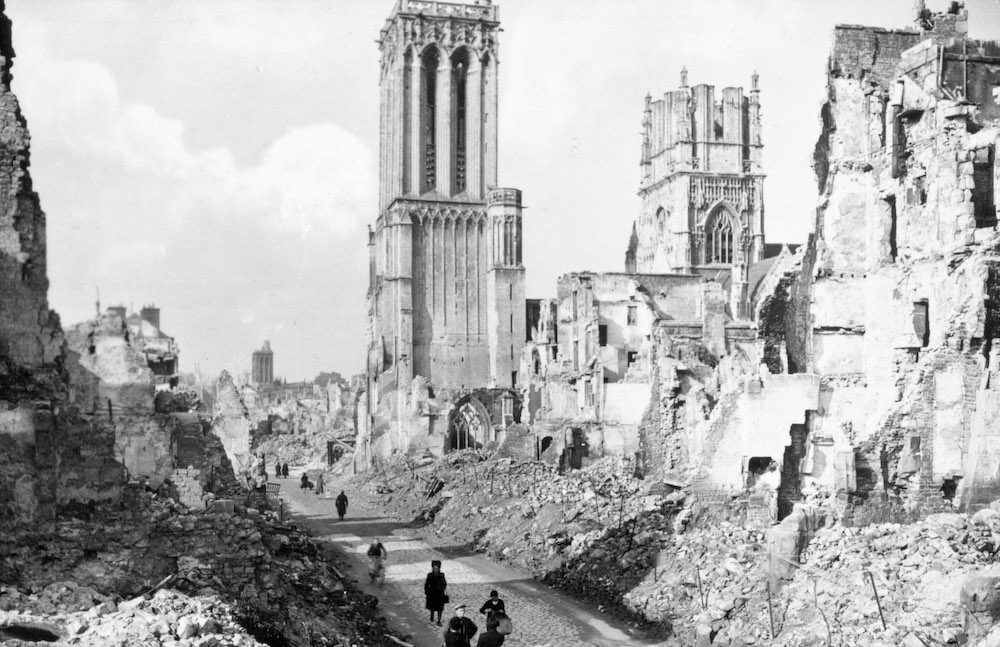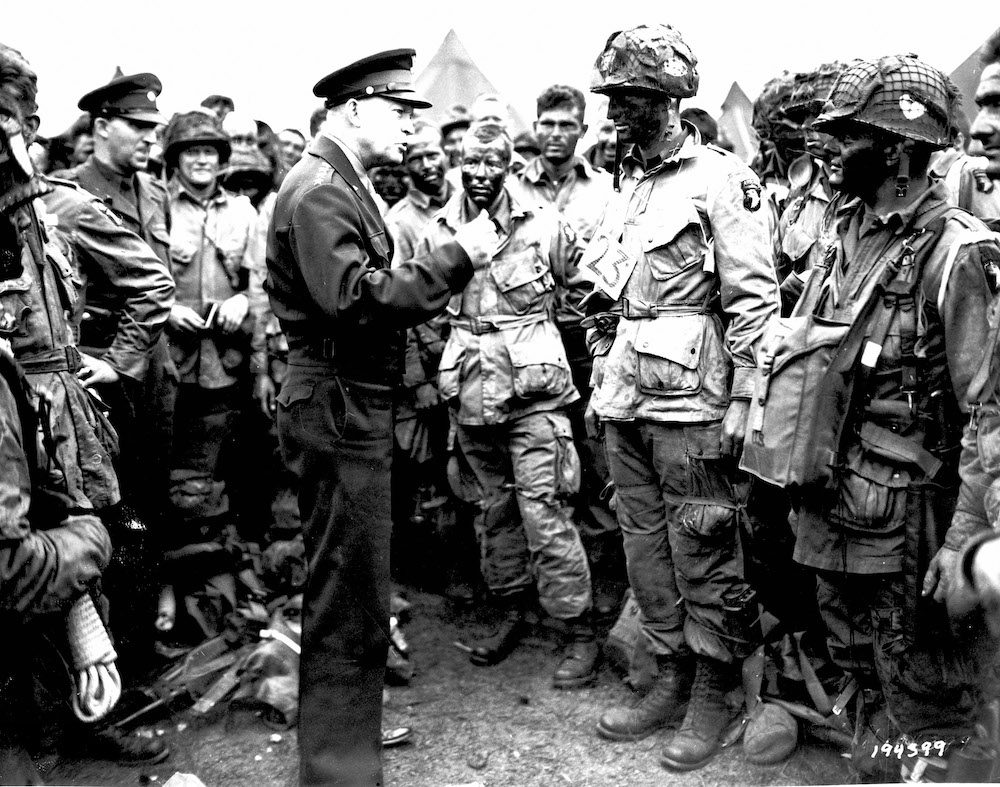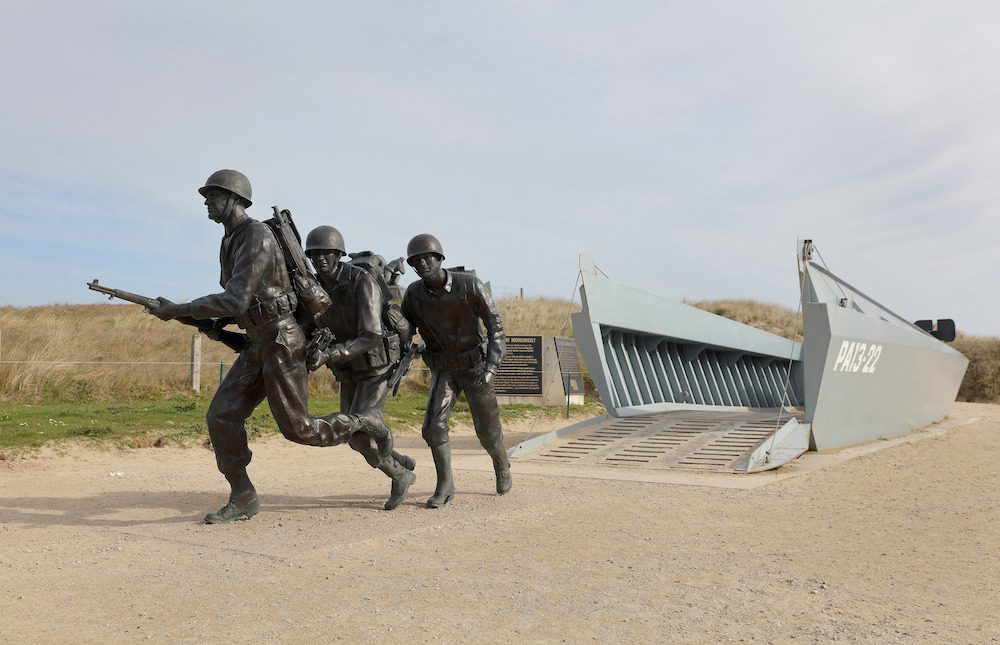
In 2024, we celebrate the 80th anniversary of D-Day and the Liberation of France from Nazi-Fascism, which marked a crucial turning point in the conclusion of World War II.
Within Scala’s collections, you can explore war reports, military documents, propaganda posters, and historical records that provide a fresh perspective on pivotal historical moments, such as the Battle of Normandy. Not to mention the contemporary photo shoots focused on memorials available, which offers additional insights into this significant period of history.
At dawn on June 6, 1944, an Allied fleet of 5,000 ships and 130,000 soldiers, led by American General Eisenhower, landed along the coast of Normandy. For protection they were accompanied by 10,000-armed aircraft. Meanwhile, during the night, 23,500 paratroopers had been deployed behind enemy lines, and the French Resistance had initiated sabotage operations against the enemy.
In preparation for the complex military operation, on May 22, 1944 significant British bombing raids were carried out on the coastal areas. The area shown in the image below, the coastal region of Point du Hoc, located between the Utah and Omaha beaches, was one of the first goals achieved during the landings.
After the landings on June 6th the Allied troops were able to advance inland, beginning the complex campaign to liberate France and northeastern Europe from German forces. The landing of numerous regiments, weapons, and military equipment on the Normandy beaches facilitated an unstoppable advance. The fighting continued, with a city-by-city approach, until August 11th, when the Allied forces began their march towards the Seine River and Paris.

The term “D-Day,” commonly used to refer to the Normandy Landings, has acquired different interpretations, such as “Day-Day” or “Day of Days,” highlighting the importance of this military operation as a crucial event in World War II. In military jargon, it originally referred to the day set for the operation, and it was later renamed as “Operation Overlord.”
The map depicted above shows the estimated locations of the Allied (US and British) and Axis (German) forces right after the June 6th, 1944, landings on the coast of Normandy in northwestern France. Explore additional maps of Operation Overlord available in the archive by following this link.
General Dwight D. Eisenhower was appointed to lead Operation Overlord by U.S. President Roosevelt in December 1943, following his successes in the Mediterranean, which included the Landing in Sicily, the Armistice of Cassibile, and the Armistice of Malta.

June 6th saw the landing of 156,000 soldiers on the shores of Normandy. These soldiers were of various nationalities: Americans, British, Canadians, French, Poles, Belgians, Czechoslovaks, Dutch, and Norwegians participated in this historic event.
The initial landings on Gold, Sword, and Juno beaches were executed by the so-called “frog men,” tasked with the critical mission of clearing mines and underwater obstacles during the low tide.
The timing of the Normandy landings was strategically chosen to coincide with a low tide, specifically to aid the operations of the 120 divers from the Landing Craft Obstruction Clearance Units, comprising 10 special units (four from the Royal Navy and six from the Royal Marines).
The transportation of troops and vehicles was facilitated by a formidable fleet, including 1,213 warships, 736 support ships, 864 cargo ships, and 4,126 landing craft.
An impressive open-air monument by French artist Anilore Banon now stands at Omaha Beach near Vierville-sur-Mer. This remarkable public art piece was commissioned by the French government to commemorate the 60th anniversary of D-Day, serving as a tribute to an important historical event.
Omaha Beach is the site where the U.S. Army’s 29th and 1st Infantry Divisions landed on June 6th, 1944, as part of the Allied invasion, also known as the D-Day Landings, during World War II.
The sculpture, made of wearable steel and consisting of wings and towers, symbolizes the Wings of Hope, the Ascension to Freedom, and the Wings of Fraternity.
Along the Normandy beaches, there are additional memorial sites and traces of war structures. Another notable location is Utah Beach near Saint-Martin-de-Varreville, scattered with bunkers and featuring the Higgins Boat Monument, dedicated to the 800 Danish sailors who took part in the Normandy landings.

Contemporary historians associate the conclusion of the Battle of Normandy, initiated by D-Day, with the Liberation of Paris. The city was conquered through a joint effort involving General Patton and the allied troops, as well as the French resistance and the fighters of the Forces Ffrançaises de l’Iintérieur (FFI). Consequently, on August 25th, 1944, General Charles de Gaulle assumed governance of the city and designated it as the capital of the Provisional Government of the French Republic.
The photos from the victory parade along the Champs Élysées, which took place on August 26th, are well-known.
Scala is proud to present the event through the photographic report by Roger Parry (1905-1977), a master of surrealist photography from the Twenties and Thirties and an exceptional witness during the liberation of Paris. View the complete photo report at this link.
Within Scala Archives, you can discover additional images linked to the Normandy landings and the Liberation of France tag.
If you can’t find the right image for your project, contact us.
***
in the cover: Normandy landings, 6th of June 1944 – SP16823